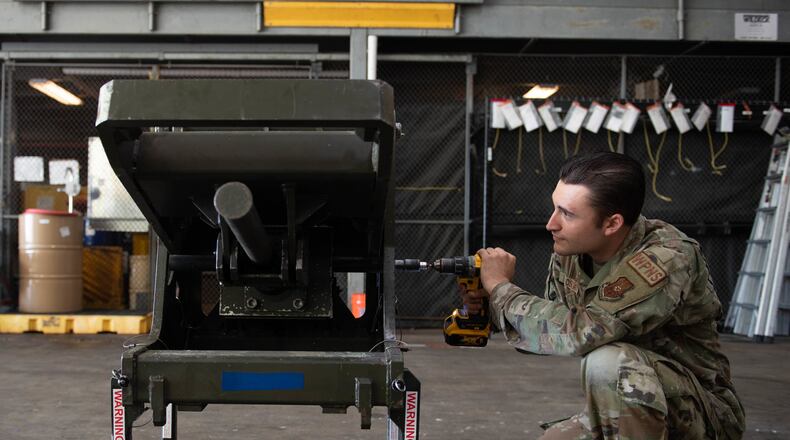That’s fine with Goins, an Air Force officer who works at the Department of Homeland Security headquarters in Washington, D.C.
“It’s kind of nice that we don’t exist on paper,” he said in an interview Friday.
Goins and others started Project Arc in 2016 on their own time, working nights and weekends, in a bid to solve technical issues in “seconds, minutes and days” instead of months and years, as he put it.
“It’s been a passion project of mine and a couple of others,” Goins said.
Arc will pick between 15 and 30 applicants who think they have what it takes to contribute. But Goins cautioned: “We take qualified people. So if we have zero qualified (applicants), we’ll take zero.”
But he doubts it will come to that.
So far, about 100 people have applied, hoping to land six-month temporary duty assignments where their technical know-how will be useful.
That number of applications may well rise to 200 or even 300, Goins believes. Applications are being accepted at ProjectArc@us.af.mil. until Aug. 4.
Goins and his team aren’t necessarily looking for elite engineers, but “people who have that same passion that we have for the project.”
Both officers and enlisted are invited to apply. Of the 20 people serving in the current Arc cohort, several are from Wright-Patterson Air Force Base. And more than a few veterans of the program work at Wright-Patt today.
There are people in the military today who don’t necessarily have a chance to show off their technical chops. Goins mentioned an airman working at a post office in Aviano Air Base, Italy, who taught himself how to program and has helped “30 or 40 projects” through Project Arc.
Another Project Arc participant turned her van into a aircraft cockpit replica.
“Those are the people we’re looking for,” he said. “They may not have opportunities to do stuff in their main job, but there are also some folks who just want to do this no matter what.”
Those selected will have a week of training at Wright-Patterson before heading out to their assignments.
Problems to be solved can be as simple as crafting a 3-D-printed part for aircraft maintenance — or something as complex as, perhaps, working with Air Force Research Laboratory to create “autonomous agents” within aircraft, giving planes greater autonomy
Past solutions included creating a dashboard to update users in real time at Joint Base Pearl Harbor-Hickham about water contamination issues in Hawaii. The dashboard was a one-stop online resource for anyone hoping to track contamination, evacuations, efforts to address the problem and more.
“Commanders can make instantaneous decisions with real-time information,” Goins said.
Project Arc has the support of the Department of the Air Force (DAF) and Air Force Materiel Command (AFMC, headquartered at Wright-Patterson). The project has dipped into funds from research labs, AFMC, DAF and other sources to pool money.
Arc spends about a $1 million a year, usually managing to pay for that through solutions to one or two problems, Goins said.
What he said he can’t put a dollar figure on — the way the project enriches careers.
“There’s a return on that investment on that airmen who is really talented and has great leadership skill(s, who instead of leaving (the Air Force) after four years, stays 20,” Goins said.
To apply or learn more about Project Arc, email ProjectArc@us.af.mil.
About the Author


